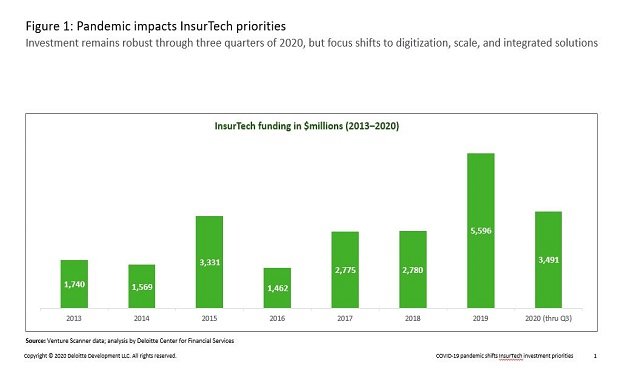 InsurTech investment remains robust through three quarters of 2020, but focus shift to digitization, scale and integrated solutions. (Source: Deloitte)
InsurTech investment remains robust through three quarters of 2020, but focus shift to digitization, scale and integrated solutions. (Source: Deloitte)
Despite the COVID-19 pandemic and its economic fallout, total InsurTech investment through the first three quarters of 2020 appears as robust as last year's record levels. However, the outbreak has prompted some significant changes in funding priorities, driven by shifting demand for the types of InsurTech products and services that can help legacy carriers adapt sooner rather than later.
Recommended For You
Want to continue reading?
Become a Free PropertyCasualty360 Digital Reader
Your access to unlimited PropertyCasualty360 content isn’t changing.
Once you are an ALM digital member, you’ll receive:
- Breaking insurance news and analysis, on-site and via our newsletters and custom alerts
- Weekly Insurance Speak podcast featuring exclusive interviews with industry leaders
- Educational webcasts, white papers, and ebooks from industry thought leaders
- Critical converage of the employee benefits and financial advisory markets on our other ALM sites, BenefitsPRO and ThinkAdvisor
Already have an account? Sign In Now
© 2025 ALM Global, LLC, All Rights Reserved. Request academic re-use from www.copyright.com. All other uses, submit a request to [email protected]. For more information visit Asset & Logo Licensing.








